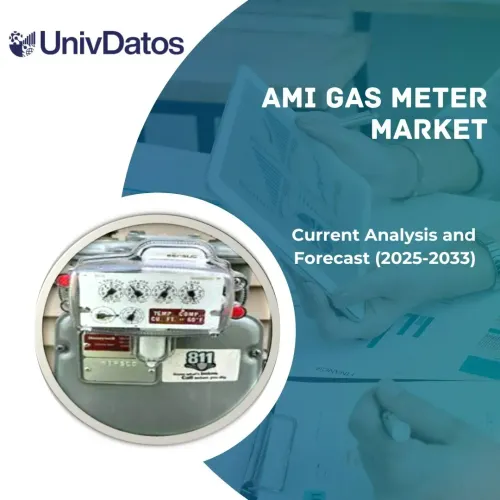- Home
- About Us
- Industry
- Services
- Reading
- Contact Us
Wind Energy Rescue System Market: Current Analysis and Forecast (2024-2032)
Emphasis on Product Type (Personal Protective Equipment (PPE), Rescue Devices, Training Services, Communication Systems, Monitoring and Alarm Systems); Application (Onshore Wind Farm, Offshore Wind Farm); and Region/Country
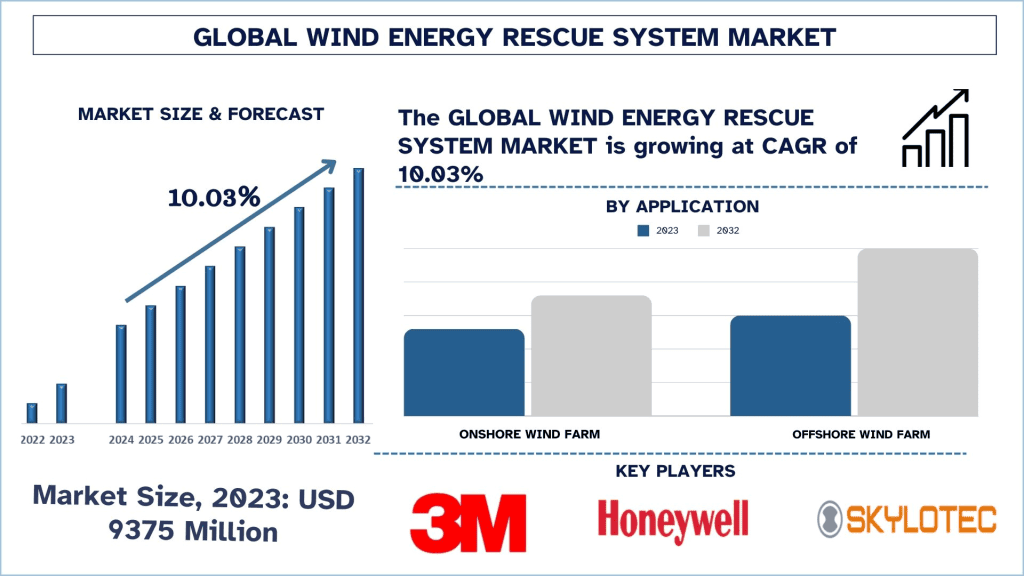
Wind Energy Rescue System Market Size & Forecast
The Wind Energy Rescue System Market was valued at USD 9375 Million in 2023 and is expected to grow at a strong CAGR of around 10.03% during the forecast period (2024-2032). The global wind energy sector is expanding rapidly, with significant investments in both onshore and offshore wind farms. This growth increases the number of personnel working at heights and in challenging environments, thereby necessitating advanced rescue systems to ensure their safety.
Wind Energy Rescue System Market Analysis
Wind turbines are installed both onshore, including inland and coastal installations, and offshore, installations located away from the coast. Wind energy workers both onshore and offshore may be exposed to common hazards throughout the entire life cycle of a wind turbine such as harmful substances, lone working, working at height, working in confined spaces, moving parts, falling objects, slips trips and falls, physical load from climbing towers, musculoskeletal disorders (MSDs), psychosocial issues, work organization, communication issues, and inexperienced workers. For offshore wind farms working at sea, extreme weather conditions lead to additional and more specific hazards. Wind energy is a relatively new industry, and some workers may not be fully aware of the hazards in this work environment. In addition, the speed at which the EU wind industry is expanding has led to a skills gap, with inexperienced workers involved in processes for which they have not been trained, therefore putting their safety and health at risk. Therefore, demand for rescue systems in the wind energy sector is escalating its market growth.
Wind Energy Rescue System Market Trends
Integration of Advanced Technologies
The integration of advanced technologies is a key trend revolutionizing the wind energy rescue system market, enhancing safety and efficiency. Smart wearables and sensors are at the forefront, embedded in safety harnesses and protective gear to provide real-time monitoring of workers’ vital signs and movements. These technologies can instantly alert rescue teams in case of falls or health emergencies, ensuring a rapid response. Additionally, drones and robotics are transforming rescue operations. Drones offer unparalleled surveillance capabilities, delivering real-time video feeds and critical rescue equipment to inaccessible locations, while robots are deployed for maintenance and emergency tasks in hazardous areas, reducing human exposure to risks.
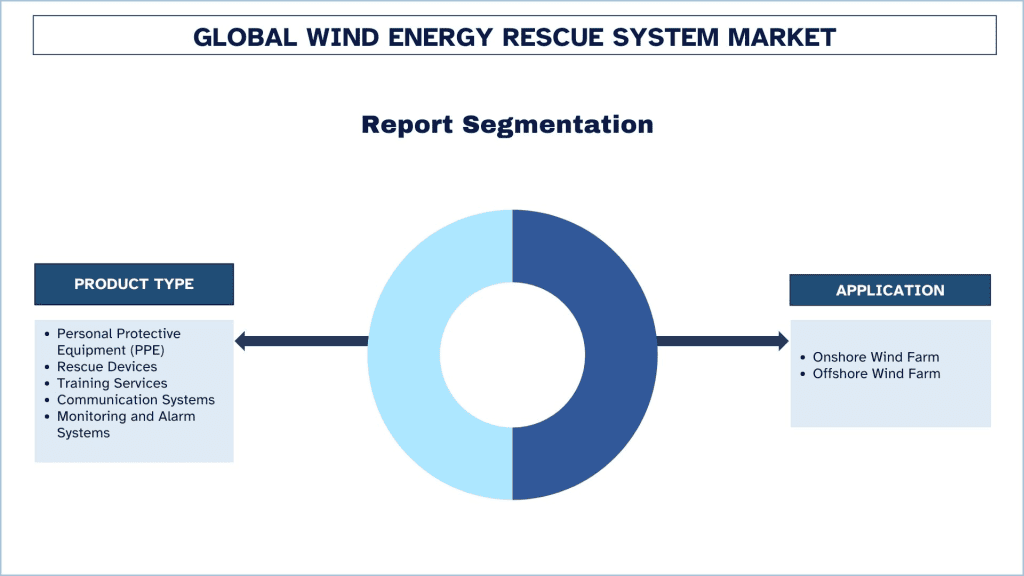
Europe is Expected to Grow with Significant CAGR During Forecast Period
Europe has long been a global leader in the wind energy sector, with extensive investments in both onshore and offshore wind farms. As the region continues to push the boundaries of renewable energy production, ensuring the safety of personnel involved in installing, maintaining, and operating wind turbines becomes paramount. Advanced rescue systems are critical in safeguarding these workers and addressing the unique challenges the wind energy industry poses.
The rapid expansion of the wind energy sector in Europe, particularly offshore wind farms, brings with it a heightened focus on safety. Offshore wind farms like the Dogger Bank Wind Farm and Hornsea Two in the UK are some of the world’s largest and most complex renewable energy projects. These projects present significant logistical and safety challenges, given their remote locations and harsh marine environments. The inherent risks associated with working at great heights and in adverse weather conditions necessitate the use of sophisticated rescue systems. Falls, equipment malfunctions, and sudden weather changes can create hazardous situations for workers. Advanced rescue systems, including automated descent devices, rescue ladders, and communication tools, are essential for timely and effective responses to emergencies.
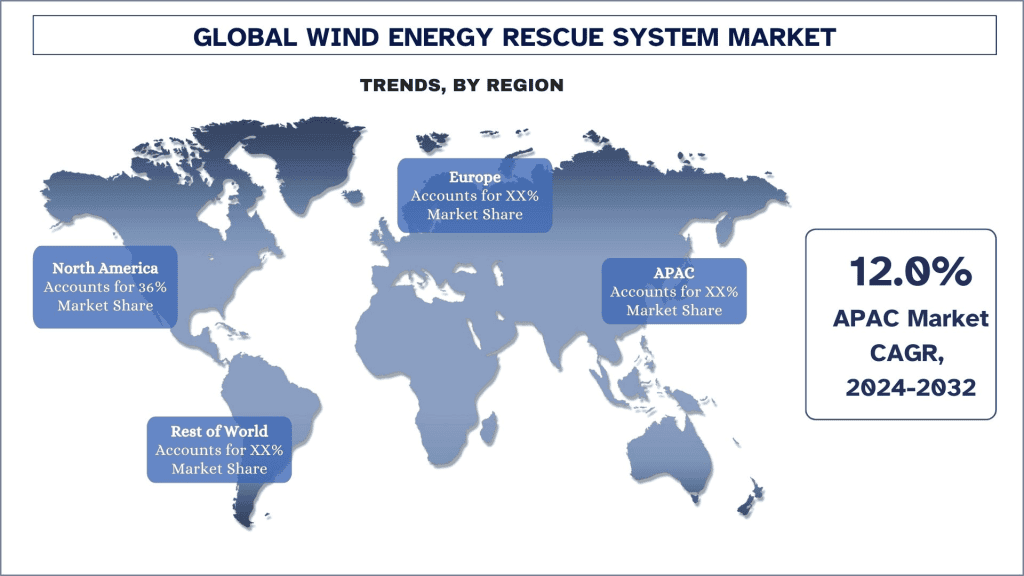
Wind Energy Rescue System Industry Overview
The Wind Energy Rescue System market is competitive and fragmented, with the presence of several global and international market players. The key players are adopting different growth strategies to enhance their market presence, such as partnerships, agreements, collaborations, new product launches, geographical expansions, and mergers and acquisitions. Some of the major players operating in the market are 3M, Honeywell International Inc., SKYLOTEC GmbH, Miller, Heightsafety GmbH & Co. KG, Hailo Wind Systems, Cresto Group AB, Zarges GmbH, Petzl, G.F.A.S. GmbH.
Wind Energy Rescue System Market News
- In 2023, Turbit Systems, a German AI startup, has developed an advanced predictive maintenance solution using machine learning algorithms to detect and resolve wind turbine performance issues early on.
- IdentiFlight, a US-based startup, has developed a real-time bird detection system for wind turbines that combines AI, machine learning, and high-precision optics. Its proprietary computer vision technology can detect birds up to a kilometer away, allowing the system to curtail turbine blades and prevent costly bird collisions
Wind Energy Rescue System Market Report Coverage
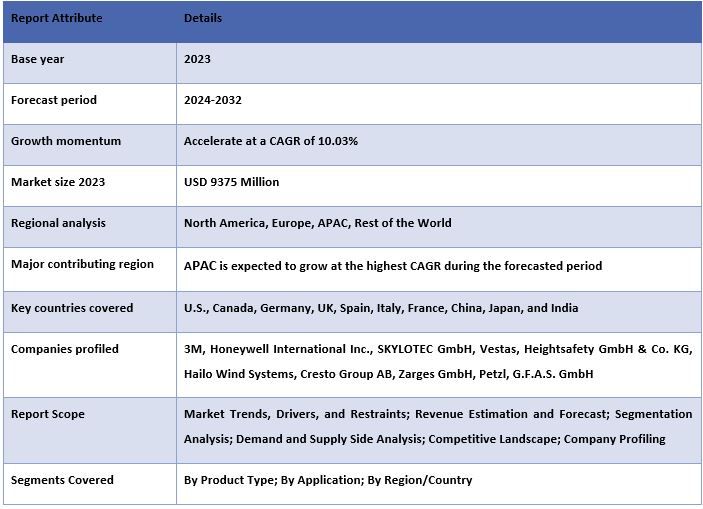
Reasons to buy this report:
- The study includes market sizing and forecasting analysis validated by authenticated key industry experts.
- The report presents a quick review of overall industry performance at one glance.
- The report covers an in-depth analysis of prominent industry peers with a primary focus on key business financials, product portfolios, expansion strategies, and recent developments.
- Detailed examination of drivers, restraints, key trends, and opportunities prevailing in the industry.
- The study comprehensively covers the market across different segments.
- Deep dive regional level analysis of the industry.
Customization Options:
The global Wind Energy Rescue System market can further be customized as per the requirement or any other market segment. Besides this, UMI understands that you may have your own business needs, hence feel free to connect with us to get a report that completely suits your requirements.
Table of Content
Research Methodology for the Wind Energy Rescue System Market Analysis (2024-2032)
Analyzing the historical market, estimating the current market, and forecasting the future market of the global Wind Energy Rescue System market were the three major steps undertaken to create and analyze the adoption of Wind Energy Rescue systems in major regions globally. Exhaustive secondary research was conducted to collect the historical market numbers and estimate the current market size. Secondly, to validate these insights, numerous findings and assumptions were taken into consideration. Moreover, exhaustive primary interviews were also conducted, with industry experts across the value chain of the global Wind Energy Rescue System market. Post assumption and validation of market numbers through primary interviews, we employed a top-down/bottom-up approach to forecasting the complete market size. Thereafter, market breakdown and data triangulation methods were adopted to estimate and analyze the market size of segments and sub-segments of the industry pertains to. Detailed methodology is explained below:
Analysis of Historical Market Size
Step 1: In-Depth Study of Secondary Sources:
Detail secondary study was conducted to obtain the historical market size of the Wind Energy Rescue System market through company internal sources such as annual reports & financial statements, performance presentations, press releases, etc., and external sources including journals, news & articles, government publications, competitor publications, sector reports, third-party database, and other credible publications.
Step 2: Market Segmentation:
After obtaining the historical market size of the Wind Energy Rescue System market, we conducted a detailed secondary analysis to gather historical market insights and share for different segments & sub-segments for major regions. Major segments are included in the report as product type and application. Further country-level analyses were conducted to evaluate the overall adoption of testing models in that region.
Step 3: Factor Analysis:
After acquiring the historical market size of different segments and sub-segments, we conducted a detailed factor analysis to estimate the current market size of the Wind Energy Rescue System market. Further, we conducted factor analysis using dependent and independent variables such as product type and application of the Wind Energy Rescue System market. A thorough analysis was conducted of demand and supply-side scenarios considering top partnerships, mergers and acquisitions, business expansion, and product launches in the Wind Energy Rescue System market sector across the globe.
Current Market Size Estimate & Forecast
Current Market Sizing: Based on actionable insights from the above 3 steps, we arrived at the current market size, key players in the global Wind Energy Rescue System market, and market shares of the segments. All the required percentage shares split, and market breakdowns were determined using the above-mentioned secondary approach and were verified through primary interviews.
Estimation & Forecasting: For market estimation and forecast, weights were assigned to different factors including drivers & trends, restraints, and opportunities available for the stakeholders. After analyzing these factors, relevant forecasting techniques i.e., the top-down/bottom-up approach were applied to arrive at the market forecast for 2032 for different segments and sub-segments across the major markets globally. The research methodology adopted to estimate the market size encompasses:
- The industry’s market size, in terms of revenue (USD) and the adoption rate of the Wind Energy Rescue System market across the major markets domestically
- All percentage shares, splits, and breakdowns of market segments and sub-segments
- Key players in the global Wind Energy Rescue System market in terms of products offered. Also, the growth strategies adopted by these players to compete in the fast-growing market
Market Size and Share Validation
Primary Research: In-depth interviews were conducted with the Key Opinion Leaders (KOLs) including Top Level Executives (CXO/VPs, Sales Head, Marketing Head, Operational Head, Regional Head, Country Head, etc.) across major regions. Primary research findings were then summarized, and statistical analysis was performed to prove the stated hypothesis. Inputs from primary research were consolidated with secondary findings, hence turning information into actionable insights.
Split of Primary Participants in Different Regions
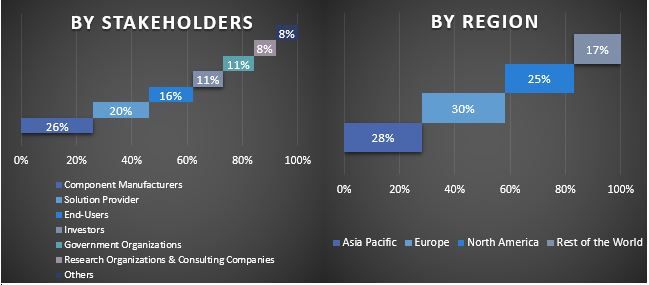
Market Engineering
The data triangulation technique was employed to complete the overall market estimation and to arrive at precise statistical numbers for each segment and sub-segment of the global Wind Energy Rescue System market. Data was split into several segments & sub-segments post studying various parameters and trends in the areas of the product type and application in the global Wind Energy Rescue System market.
The main objective of the Global Wind Energy Rescue System Market Study
The current & future market trends of the global Wind Energy Rescue System market were pinpointed in the study. Investors can gain strategic insights to base their discretion for investments on the qualitative and quantitative analysis performed in the study. Current and future market trends determined the overall attractiveness of the market at a regional level, providing a platform for the industrial participant to exploit the untapped market to benefit from a first-mover advantage. Other quantitative goals of the studies include:
- Analyze the current and forecast market size of the Wind Energy Rescue System market in terms of value (USD). Also, analyze the current and forecast market size of different segments and sub-segments
- Segments in the study include areas of the product type and application
- Define and analysis of the regulatory framework for the Wind Energy Rescue System industry
- Analyze the value chain involved with the presence of various intermediaries, along with analyzing customer and competitor behaviors of the industry.
- Analyze the current and forecast market size of the Wind Energy Rescue System market for the major region
- Major countries of regions studied in the report include Asia Pacific, Europe, North America, and the Rest of the World
- Company profiles of the Wind Energy Rescue System market and the growth strategies adopted by the market players to sustain in the fast-growing market
- Deep dive regional level analysis of the industry.
Frequently Asked Questions FAQs
Q1: What is the current market size and growth potential of the Wind Energy Rescue System market?
Q2: What are the driving factors for the growth of the Wind Energy Rescue System market?
Q3: Which segment has the largest share of the Wind Energy Rescue System market by product type?
Q4: What are the emerging technologies and trends in the Wind Energy Rescue System market?
Q5: Which region will dominate the Wind Energy Rescue System market?
Related Reports
Customers who bought this item also bought







